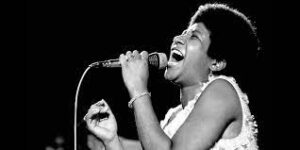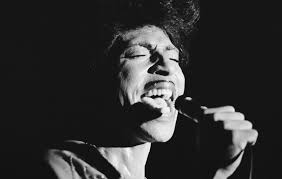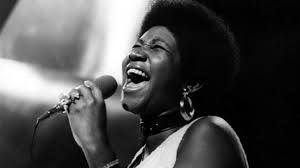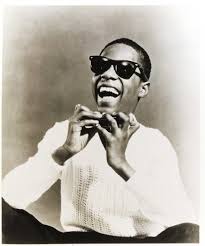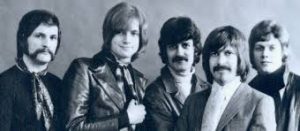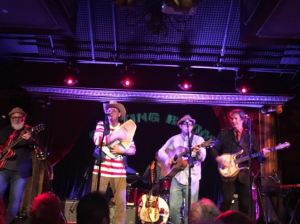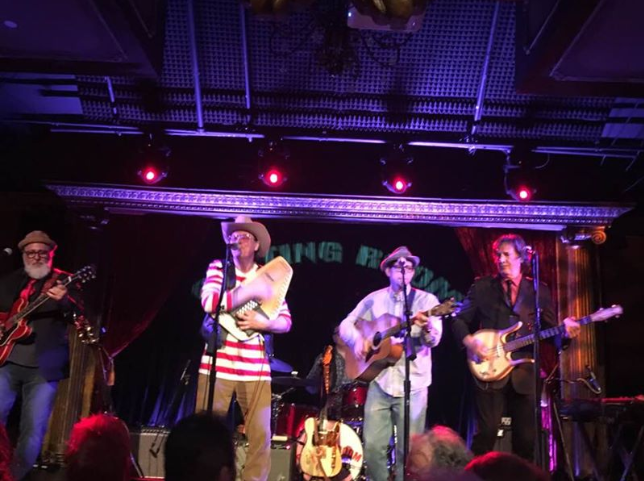Aesthetic Realism, the philosophy founded and taught by the American poet and critic Eli Siegel, explains that a successful work of art pleases us deeply because, in its technique, it does what we are hoping to do in our lives. “All beauty,” it states, “is a making one of opposites, and the making one of opposites is what we are going after in ourselves.” Aretha Franklin’s great 1968 recording of Burt Bacharach and Hal David’s I Say A Little Prayer thrills me from the bottom of my feet to the top of my head because of the way it puts together containment and ecstasy, restraint and letting go, individuality and relation.
In I Say a Little Prayer we hear a single self; alone, apart, distinct, and at the same time ecstatically, joyously related to the world outside herself. And these opposites of singleness and relation are made one, not only in the words and in Aretha Franklin’s singing, but in the structure of the song itself. Here’s how it begins:
I’m looking at this recording in relation to notes from a 1975 class taught by Eli Siegel, in which he related music to his Questions for Everyone, which consists of 27 questions—deep, surprising, tough, kind questions that have powerfully affected every person who’s ever read them. I see this song as a thrilling comment on Question #1:
“Do I feel the same alone as I do with other people?”
The Self: Alone and Together
This song—both in its meaning and structure—is dramatically about a woman seeing herself as alone, yet also in relation to a man she cares for, and to the world itself. In the class I referred to, Mr. Siegel said:
Every reality can be seen as lonely, including one grain of oatmeal. Every note can be alone.
From the outset of this piece, there is a lot of separation of sound, including in the recording technique of stereo separation: the piano and drums are in one channel while the guitar and backup singers (the Sweet Inspirations) are in the other. And when Aretha enters, her voice comes from both channels, joining them. Each of these elements—each individual note, syllable, drum tap—can be seen as alone, but man do they keep beautiful company, creating such a wonderful, undulating tapestry of sound!
Aretha Franklin’s voice reaches right to the center of your soul with that gorgeous combination of urgency and casualness, intensity and ease. And the lyrics convey a very fine human impulsion: “The moment I wake up, before I put on my makeup, I say a little prayer for you.” Listen:
Is this an instance of a woman having good will? I think so. Good will, I learned from Aesthetic Realism, is “the desire to have something else stronger and more beautiful, for this desire makes oneself stronger and more beautiful.” And it is the thing that will have a person feel that when he or she is alone, they are not so different from when they’re with other people. And we find it in the music. For example, I love the way, after Aretha sings, “I say a little…” with those alternating up-and-down notes that can sound almost fragile, the Sweet Inspirations complete her thought, singing “prayer for you” in rich harmony. In the very technique, the outside world is joining her, strengthening her, completing her. She’s alone, but she’s also most definitely not alone.
And then, in the chorus, to church we go! After all, this is a prayer! The wonderful, surging, gospel-style call-and-response we hear as the Sweet Inspirations sing, “Forever! Forever!” and Aretha passionately responds, “Forever! Ever-er!” to each wave of emotion that she receives from them, is a wonderful illustration of a single self getting to strength and joy through the world outside.
What I Learned
How different this is from the feeling I and many people have had—not only in the moment we wake up, but for a lot of moments afterward: “How’s the world treating me today? Did I get enough sleep?, Do I have time to make coffee? What does the boss think of me?” etc.—in other words, one’s running monologue about oneself. And then when we are with other people we feel it’s jarring because we haven’t had people in our minds in a deep, thoughtful way before that time.
Once in a class taught by Ellen Reiss, Aesthetic Realism Chair of Education, a colleague mentioned that I liked to keep my distance from people. I said it was true, that I didn’t like myself for it, and wanted to understand myself better and change. Ms. Reiss asked: Why would one do that?
Kevin Fennell: Well, so I can just be with myself?—just have my own surroundings?
Ellen Reiss: How about that? Everyone has a preference for one’s own company. When you already have the best, why go elsewhere? Oneself is a precious commodity; there are only so many minutes in a day—why waste them?
I thank Ellen Reiss for her kind, critical, and often humorous, encouragement of my life. Questioning myself through discussions like this, I’ve become far more interested in knowing other people and trying to do them good than I ever would have been otherwise; and it makes for real pride.
In the technique of “I Say A Little Prayer,” the woman singing does not present herself as a “precious commodity.” In fact, the outside world is lovingly present at all times—the instruments, and very much the backup singers. They are backup singers in the true sense of the word—that is, they back the singer up in the depth of her feeling.
Another way this song addresses the question of a single self in relation to the world, of containment and release, is the way it has contraction and expansion rhythmically. The music is largely in 4/4 time, but at unexpected moments, the composer Burt Bacharach shortens a measure to 2/4 or 3/4 and you feel a little stumble, then a rush forward. Does this subtle rhythmic contraction and expansion convey through sound the sense of a self holding onto itself and also spreading out widely? I think it does. Listen for it.
Aesthetic Realism changed my life by showing me that what goes on inside of me is not apart from, but is deeply related to everything else in the world, including the inner lives of other people. One of these persons is the woman I love, Carol McCluer, my wife and friend. The knowledge of Aesthetic Realism logically and kindly demolished the wall behind which I separated myself from humanity, and which—though I had built it with my own conceit—was suffocating me. I’m grateful for what I’m learning now and for how my life continues to change. I feel so much more now that the person I am alone is the same as the person I am with other people.
To Really Mean It
Getting back to the recording, a great moment is coming. Following the two rousing choruses we just heard, things quiet down and mellow out considerably as the call-and-response now between Aretha and backup singers gets more spread out and easy-going on the words, “I’m in love with you. Answer my prayer. Say you love me too.” It seems like the song is winding down to its conclusion. Suddenly Aretha lets out a deep, “Yeah-eah-eah!” and the chorus of the song comes surging back, more intense, more utterly free and beautifully controlled than ever. Her prayer comes forth with new conviction and unmistakable ecstasy. We can learn from this. Do we want to be like this music—stick to our largest feeling, have it grow, and show it with all of ourselves? The revival of the chorus here says, “I want to mean it more, and more, and keep on meaning it!”
I thank Aesthetic Realism for showing so beautifully that there’s really no such thing as one’s self alone, apart—however much it may seem so. Our middle name is relation. This song, I think, celebrates that fact.
Learn more: AestheticRealism.org
